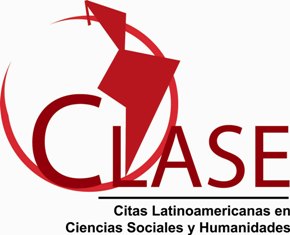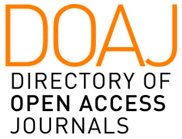Tecnologías disruptivas, convergencia y aceleración: Deporte y las implicaciones tecnológicas (Revisión )
Palabras clave:
Tecnologías disruptivas, Convergencia tecnológica, DeporteResumen
Las tecnologías disruptivas, la convergencia y la aceleración están revolucionando el ámbito del deporte y la salud, impulsando avances en campos como la biotecnología, la medicina personalizada y la inteligencia artificial. Estos cambios permiten un mejor monitoreo y análisis del rendimiento, con tecnologías de realidad virtual y aumentada mejorando el entrenamiento deportivo. Las nuevas plataformas de comunicación fomentan la actividad física y los estilos de vida saludables, mientras que la nanotecnología y la impresión 3D facilitan la creación de equipamiento deportivo personalizado. Estas innovaciones también están dando lugar a nuevos deportes, como los eSports, droneracing, exergames, deportes robóticos y eFoiling. Sin embargo, también presentan desafíos, como el dopaje tecnológico y las desigualdades en el acceso a estas tecnologías. Es esencial considerar las implicaciones éticas y sociales de estas innovaciones, y garantizar la integridad del deporte a través de la regulación y la educación. En conclusión, aunque las tecnologías emergentes tienen el potencial de mejorar la salud y el rendimiento deportivo, es crucial gestionar estos avances de forma responsable para asegurar un futuro equitativo y sostenible en el deporte y la salud.
Descargas
Referencias
Azlina, M. Mokmin, • Regania, P. Rassy, and R. P. Rassy, “Education and Information Technologies Review of the trends in the use of augmented reality technology for students with disabilities when learning physical education • Augmented Reality • Educational Augmented Reality • Physical Education • Sports • Students with Learning Disabilities,” Educ Inf Technol (Dordr), 123AD, doi: 10.1007/s10639-022-11550-2.
Barman et al., “The role of nanotechnology based wearable electronic textiles in biomedical and healthcare applications,” Mater Today Commun, vol. 32, p. 104055, Aug. 2022, doi: 10.1016/J.MTCOMM.2022.104055.
Bouchard and E. P. Hoffman, “Genetic and Molecular Aspects of Sport Performance,” Genetic and Molecular Aspects of Sport Performance, Nov. 2010, doi: 10.1002/9781444327335.
Campos, J. C. Molina Correa, V. C. M. Canevari, B. H. M. Branco, L. V. Andreato, and S. De Paula Ramos, “Monitoring Internal Training Load, Stress-Recovery Responses, and Immune-Endocrine Parameters in Brazilian Jiu-Jitsu Training,” J Strength Cond Res, vol. 36, no. 3, pp. 723–731, Mar. 2022, doi: 10.1519/JSC.0000000000003507.
Clayton M. Christensen, “The Innovator’s Dilemma: When New Technologies Cause Great Firms to Fail,” 1997.
“Genetically Modified Athletes: Biomedical Ethics, Gene Doping and Sport - Andy Miah - Google Libros.”https://books.google.com.co/books?hl=es&lr=&id=ZerGLY9dv8IC&oi=fnd&pg=PP1&dq=Enhancing+athletes:+Is+it+bad+sportsmanship,+or+simply+the+next+step+in+human+evolution%3F+&ots=tq8O1bhBUo&sig=ATnRH4ZrhiV_ezQkurTeVKRZTQI&redir_esc=y#v=onepage&q&f=false (accessed May 04, 2023).
Gineviciene, A. Utkus, E. Pranckeviciene, E. A. Semenova, E. C. R. Hall, and I. I. Ahmetov, “Perspectives in Sports Genomics,” Biomedicines 2022, Vol. 10, Page 298, vol. 10, no. 2, p. 298, Jan. 2022, doi: 10.3390/BIOMEDICINES10020298.
Gollnick, R. B. Armstrong, B. Saltin, C. W. Saubert, W. L. Sembrowich, and R. E. Shepherd, “Effect of training on enzyme activity and fiber composition of human skeletal muscle.,” https://doi.org/10.1152/jappl.1973.34.1.107, vol. 34, no. 1, pp. 107–111, 1973, doi: 10.1152/JAPPL.1973.34.1.107.
“Global computing capacity – AI Impacts.” https://aiimpacts.org/global-computing-capacity/ (accessed May 02, 2023).
Hammes, A. Hagg, A. Asteroth, and D. Link, “Artificial Intelligence in Elite Sports—A Narrative Review of Success Stories and Challenges,” Front Sports Act Living, vol. 4, p. 861466, Jul. 2022, doi: 10.3389/FSPOR.2022.861466/FULL.
Huang, M. Sun, and L. C. Jiang, “Core social network size is associated with physical activity participation for fitness app users: The role of social comparison and social support,” Comput Human Behav, vol. 129, p. 107169, Apr. 2022, doi: 10.1016/J.CHB.2021.107169.
Hsia, C. F. Lai, and Y. S. Su, “Impact of using ARCS model and problem-based leaning on human interaction with robot and motivation,” Library Hi Tech, vol. 40, no. 4, pp. 963–975, Aug. 2022, doi: 10.1108/LHT-07-2020-0182/FULL/XML.
Lentillon-Kaestner and C. Carstairs, “Doping use among young elite cyclists: a qualitative psychosociological approach,” Scand J Med Sci Sports, vol. 20, no. 2, pp. 336–345, Apr. 2010, doi: 10.1111/J.1600-0838.2009.00885.X.
Lundstrom, N. A. Foreman, and G. Biltz, “Practices and Applications of Heart Rate Variability Monitoring in Endurance Athletes,” Int J Sports Med, vol. 44, no. 01, pp. 9–19, Jan. 2023, doi: 10.1055/A-1864-9726.
Miah, “Sport 2.0: Transforming Sports for a Digital World,” Sport 2.0, Dec. 2017, doi: 10.7551/MITPRESS/7441.001.0001.
Muñoz, J. F. Villada, J. Carlos, and G. Trujillo, “Artículo Original Exergames: una herramienta tecnológica para la actividad física”.
Nahavandi, R. Alizadehsani, A. Khosravi, and U. R. Acharya, “Application of artificial intelligence in wearable devices: Opportunities and challenges,” Comput Methods Programs Biomed, vol. 213, p. 106541, Jan. 2022, doi: 10.1016/J.CMPB.2021.106541.
Pizzo, Y. Su, T. Scholz, B. J. Baker, J. Hamari, and L. Ndanga, “Esports Scholarship Review: Synthesis, Contributions, and Future Research,” Journal of Sport Management, vol. 36, no. 3, pp. 228–239, Mar. 2022, doi: 10.1123/JSM.2021-0228.
Roco, MC. “Coherence and divergence of megatrends in science and engineering,” Journal of Nanoparticle Research, vol. 4, no. 1–2, pp. 9–19, 2002, doi: 10.1023/A:1020157027792.
Săvulescu, “The Future of Human Enhancement and Setting Rules for Technological Doping,” Analele Universității din București – Seria Filosofie, vol. 66, no. 2, pp. 9–24, 2017.
Straker, C. Wrigley, and Edward Elgar Publishing, The agile landscape of design thinking. Edward Elgar Publishing, 2023. Accessed: May 02, 2023. [Online]. Available: https://www.elgaronline.com/display/book/9781802203134/book-part-9781802203134-12.xml
Wang, I. Qureshi, F. Guo, and Q. Zhang, “Corporate social responsibility and disruptive innovation: The moderating effects of environmental turbulence,” J Bus Res, vol. 139, pp. 1435–1450, Feb. 2022, doi: 10.1016/J.JBUSRES.2021.10.046.
Xhameni, R. Cheng, and T. Farrow, “A Precision Method for Integrating Shock Sensors in the Lining of Sports Helmets by Additive Manufacturing,” IEEE Sens Lett, vol. 6, no. 10, Oct. 2022, doi: 10.1109/LSENS.2022.3205249.
Descargas
Publicado
Número
Sección
Licencia
Derechos de autor 2024 Revista científica Olimpia

Esta obra está bajo una licencia internacional Creative Commons Atribución-NoComercial-CompartirIgual 4.0.

































